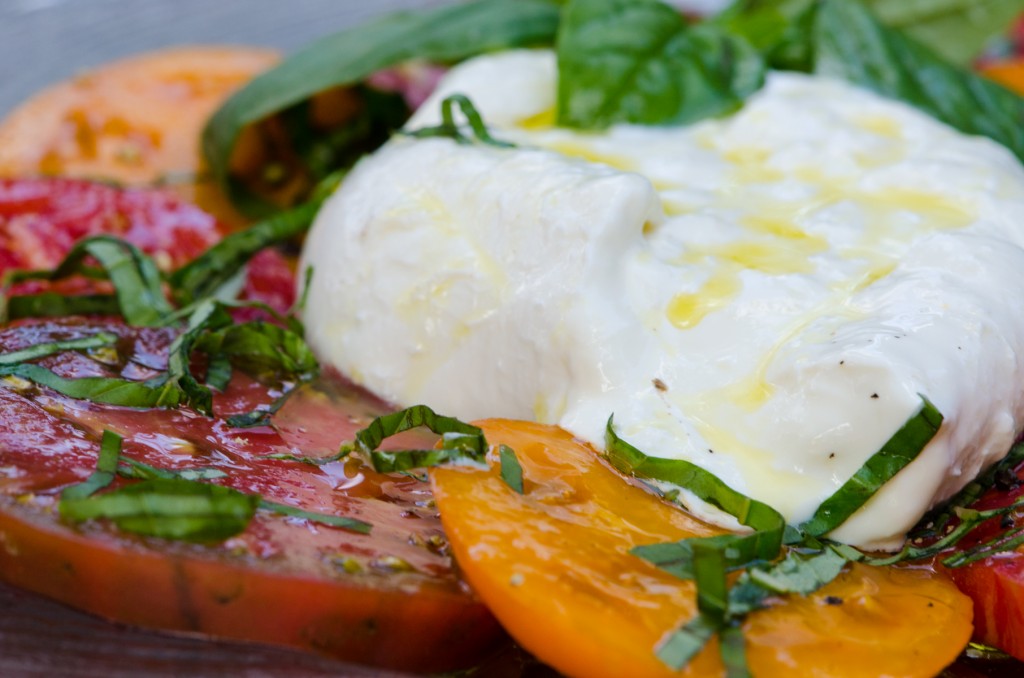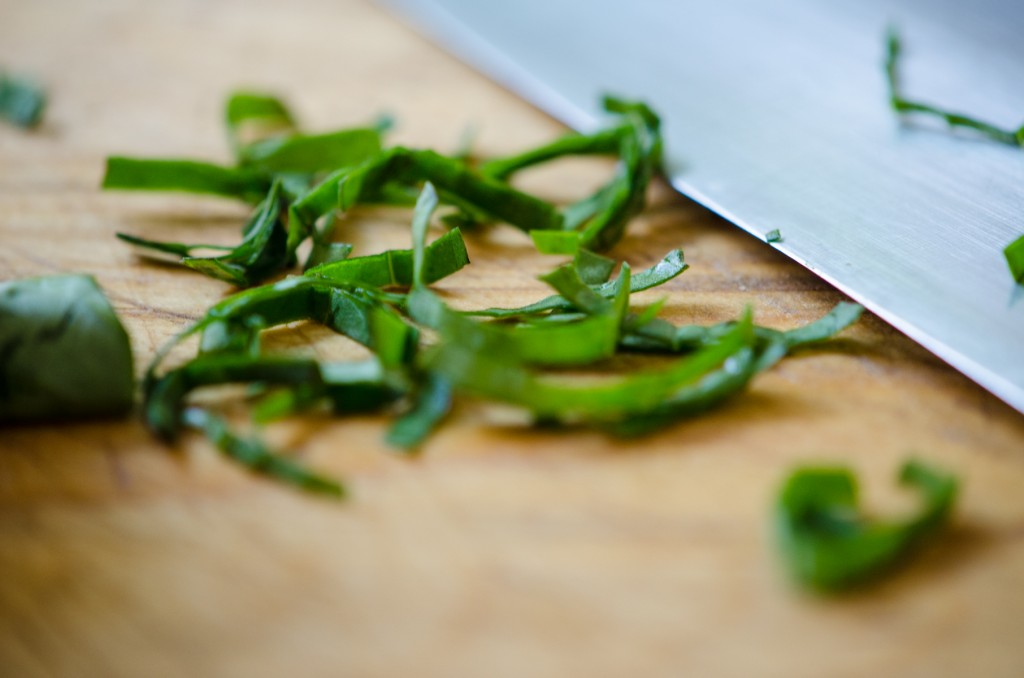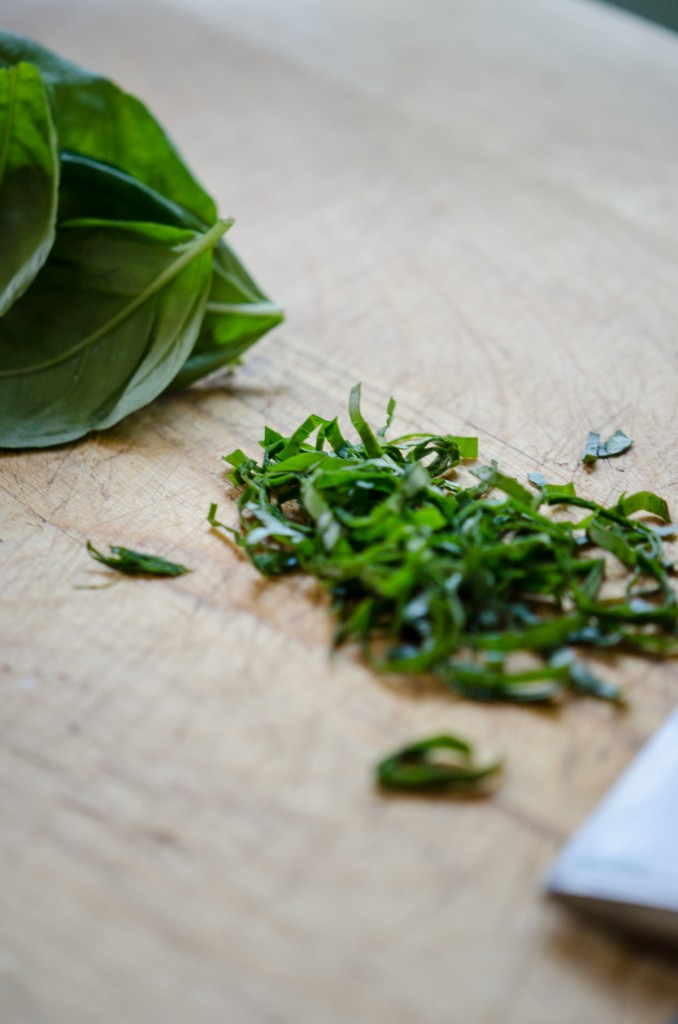5 Tips For A Great Insalata Caprese – Caprese Salad
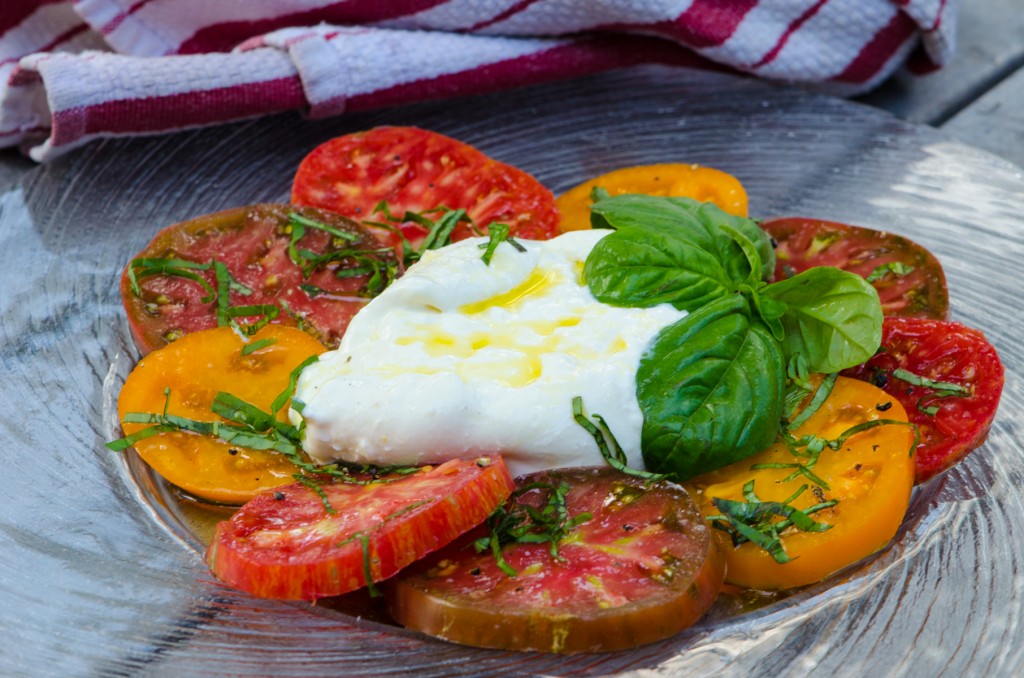 It seems a bit silly to talk about a formal recipe for this dish – a few ingredients, a bit of chopping, and you are done. But this simple dish illustrates the importance of great ingredients, and doing little to them. Alice Waters of Chez Panisse was once criticized by a fancy French chef, who described her food as "not cooking, just shopping". Her emphasis on fresh, seasonal ingredients, and doing relatively little to them, is how Italians often cook – this is how we cook on our Italy cycling tours. Dishes are simple, ingredients few, and limited to products that are being harvested from farms that morning. When you have great components, great food is easy to make.
It seems a bit silly to talk about a formal recipe for this dish – a few ingredients, a bit of chopping, and you are done. But this simple dish illustrates the importance of great ingredients, and doing little to them. Alice Waters of Chez Panisse was once criticized by a fancy French chef, who described her food as "not cooking, just shopping". Her emphasis on fresh, seasonal ingredients, and doing relatively little to them, is how Italians often cook – this is how we cook on our Italy cycling tours. Dishes are simple, ingredients few, and limited to products that are being harvested from farms that morning. When you have great components, great food is easy to make.
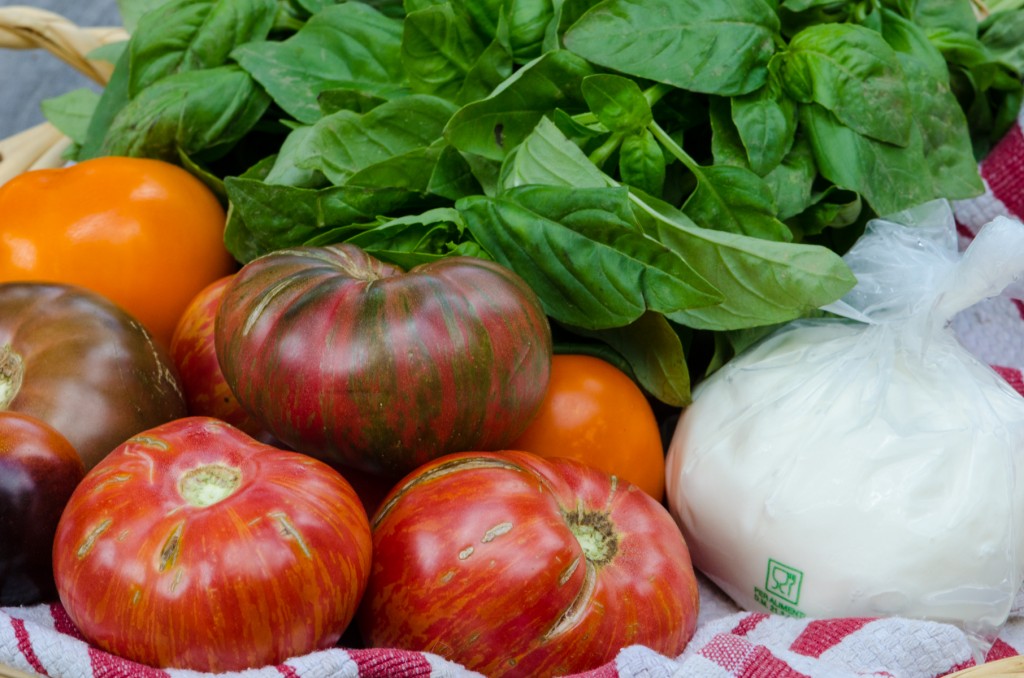 According to Faith Willenger, Insalata Caprese (the salad from Capri, an island off the Amalfi coast) was created in the 1950s at the Trattoria da Vincenzo for regulars looking for a light lunch. It would be served only in the summer, and consisted of a just-picked tomato and fresh fior da latte, cow's milk mozzarella, as there are no buffalo on the island. On Capri, it would be served with wild arugula and wild oregano. Today, it is found on tables throughout Italy, usually with mozzarella and basil, and is very popular with tourists. However, unless the caliber of the components is high, it is a rather mediocre dish. Here are my tips for making a great Caprese salad.
According to Faith Willenger, Insalata Caprese (the salad from Capri, an island off the Amalfi coast) was created in the 1950s at the Trattoria da Vincenzo for regulars looking for a light lunch. It would be served only in the summer, and consisted of a just-picked tomato and fresh fior da latte, cow's milk mozzarella, as there are no buffalo on the island. On Capri, it would be served with wild arugula and wild oregano. Today, it is found on tables throughout Italy, usually with mozzarella and basil, and is very popular with tourists. However, unless the caliber of the components is high, it is a rather mediocre dish. Here are my tips for making a great Caprese salad.
- Fresh just-picked tomatoes – this one tip means that I don't bother with Insalata Caprese 9 or 10 months out of the year. Feast on it while tomatoes are fresh, but don't bother with the tasteless January tomatoes shipped in from who knows where. You are not doing much to the ingredients, so if they don't have flavor, your salad won't either.
- A great cheese – A fresh, local mozzarella or a great imported fresh cheese. I would choose even a high quality goat or ricotta before resorting to a packaged processed mozzarella. Here, I've used burrata, a creamy mozzarella.
- Good olive oil – Once again, ingredient quality. This is the excuse to invest in a nice, high quality extra-virgin olive oil, not the cheaper olive oils on your grocery shelves.
- No vinegar – This would fight with the delicate cheeses. You want to enhance the natural flavors of the ingredients you've selected with care, not overwhelm.
- Don't forget the salt – Something that many overlook, but salt is used to activate your taste buds and allow you to taste flavors. And use kosher salt or sea salt; not iodized.
1 pound fresh local tomatoes; a mix of different varities of heirloom tomatoes makes a lovely presentation
Fresh cheese – mozzarella, burrata, even goat or ricotta
Fresh basil leaves, cut into thin strips (chiffonade) (or substitute arugula)
Extra virgin olive oil
Kosher salt
Freshly ground black pepper
Slice tomatoes crosswise into 1/2 inch thick slices. I like to use a serrated knife for this.
If you are using a fairly firm cheese like mozzarella, you can slice it as well. Place the tomato and cheese slices on a serving platter, alternating. If the cheese is too soft to slice, serve as I did – just place the cheese in the middle of the serving platter.
Garnish with the basil strips, drizzle with the olive oil, season with salt and pepper and serve.
To chiffonade basil:
Take several basil leaves and stack them together. Flatten and place on a cutting board.
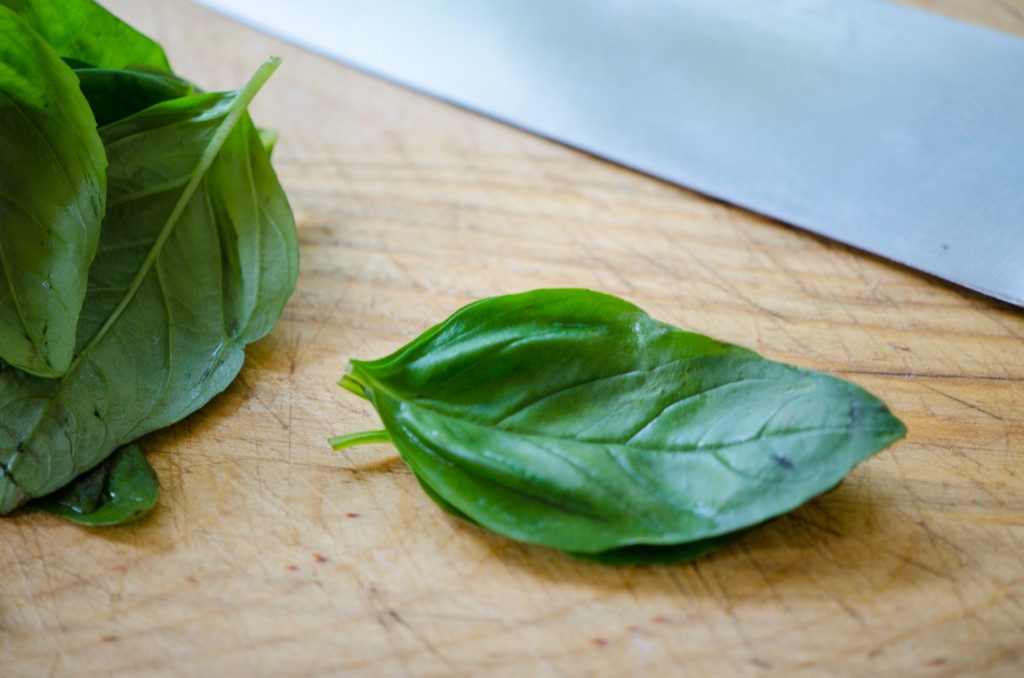 Rolll up the leaves, as if you were rolling a cigar.
Rolll up the leaves, as if you were rolling a cigar.
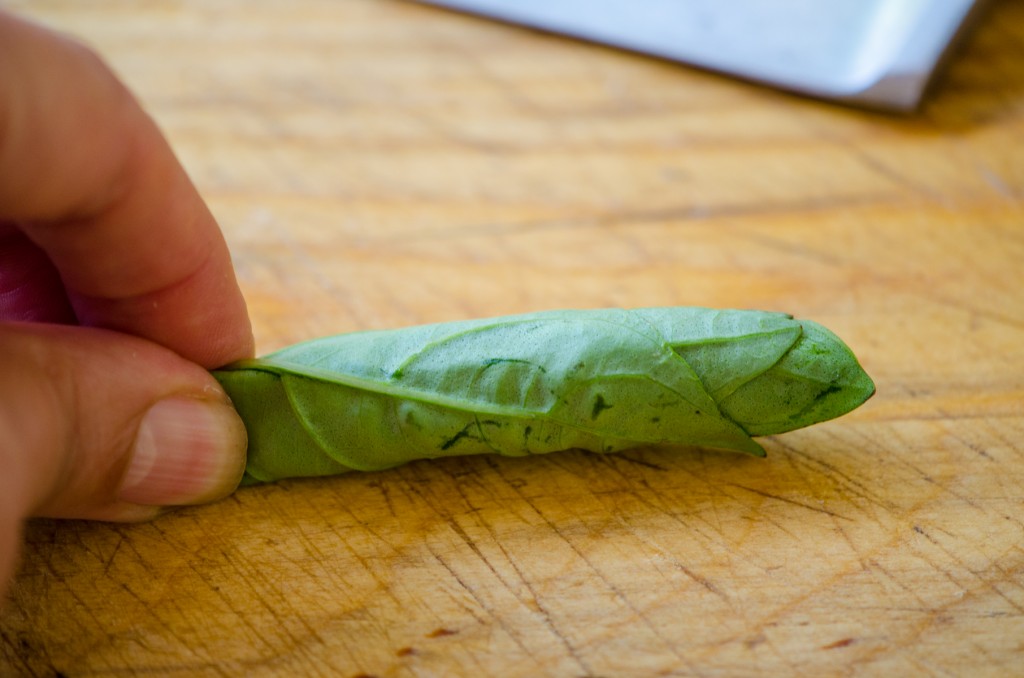 With a SHARP knife, cut the roll crosswise into thin strips.
With a SHARP knife, cut the roll crosswise into thin strips.
